In the competitive market we live in today, every business should be looking for new ways to maintain and grow their business. It helps if new projects are aligned with your core business and, even better, if they can be targeted at an existing customer base. Retaining or growing business with an existing customer is always much easier and more successful than entering completely new markets.
The ChromaLuxe and Unisub range of products provide one great way of doing this; and one with nice margins and ease of use.
Universal Woods produce ChromaLuxe which is a range of dye sublimation coated panels. They are available on aluminium sheets, MDF panels and hardboard. Images, photos and graphics can be easily transferred to the panels. The result is super high quality images on a very durable tough surface which is scratch, fire and moisture resistant.
Unisub is essentially a very similar product, also from Universal Woods, but aimed firmly at the gift market with items such as clocks, trays, plaques, coasters and table mats, key rings and luggage tags. Basically smaller sizes that only need an A4 or A3 printer and similar sized heat press.

Production of both ChromaLuxe and Unisub products requires a dye sublimation printer (with inks and paper, of course) and a flat bed heat press. A basic system capable of printing up to A3 will leave change from €2,000. A full size system capable of printing up to 1.2m x 2.4m can cost over €50,000. But a Midi sized system capable of printing up to 75x110cm will cost a more modest €15,000. Such a system is great for printing large panels but can also produce tiny items like dog tags! Remember that because it is a dye sublimation process, the printer and press can also be used for printing on textiles. With typical sales pricing the Return on Investment can often be only a few months with a very modest print production of 3 or 4 prints per week.
But what is the market for these products? Well, we always say that “your imagination is the limit”. Photo prints is the obvious and main use, but we now see more and more creative adaptations. One of our largest clients is making only table tops, predominantly for the café and bar market – it’s a great promotional tool. Another huge client specializes in whiteboard for hospitals, schools and corporate use. Whiteboard pens can be used on ALL our products without creating any damage. Should someone accidentally use a permanent marker (we’ve all seen it happen!) it can be quickly clea ned off with some acetone or similar cleaning product. Even better, it does not leave any shadow mark.
ned off with some acetone or similar cleaning product. Even better, it does not leave any shadow mark.
Other potential uses are Indoor signage – you could use our clear aluminium as an alternative to anodized plates. Other uses are for Serial number plates for equipment, machinery plates, Advertising A-boards etc.
So now look at your customer base and think about what could be done. Some great examples – Spas, hotels, golf clubs (tee off boards, membership bag tags), sports clubs, football clubs (famous clubs could have a range of gift items), corporate wall décor and signage, manufacturing (safety panels). Museums love the product as it can be touched by kids and cleaned easily.
The list is endless.
Let’s have a quick look at the photo market. For many years all our photos were taken on film and then produced as prints using a chemical process. As we know digital photography has now replaced film almost totally. But photo prints from our digital images made with photo chemicals are still very popular and provide a very high quality result. Photo labs offering online prints at 10×15 cm and 13×18 cm sizes still do huge business. At the high end, large format prints are often made with the chemical process and then mounted on Dibond or behind acrylic.
However, at the same time over the last 15 years, we see a lot of inkjet printing onto art papers, canvas, banners etc. The quality has improved dramatically over the years, but in terms of quality photo chemical based papers are still the benchmark.
Where does dye-sublimation fit into this? First of all do not get confused with those little dye-sub printers used in many photo kiosks that produce 10×15 cm prints using RGB/CMY coloured films. Real Dye-sublimation is the process where prints are made onto a paper using special sublimation inks. The ink is then transferred to a coated material in a heat press using high pressure and high heat. The substrate can be a textile or a hard substrate like ChromaLuxe and Unisub. Hard substrates include aluminium, MDF, hardboard and FRP.
heat press using high pressure and high heat. The substrate can be a textile or a hard substrate like ChromaLuxe and Unisub. Hard substrates include aluminium, MDF, hardboard and FRP.
So how does a ChromaLuxe print compare with our benchmark of silver based photo paper going through a chemical process. In terms of colour gamut (the range of colours that can be printed), a ChromaLuxe print very closely matches the photo paper and is much better than prints from an inkjet flatbed printer. As the inks are infused into a multi-layer coating on the ChromaLuxe, there is an impression of 3 dimensions and the colours truly ‘pop’. But a very big advantage is that the surface is incredibly durable – tough and long lasting. Firstly, with a surface rather like glass, it is extremely scratch resistant unlike papers and it can even be cleaned with powerful industrial cleaners. Secondly, testing by the Rochester Institute of Technology has shown that it has over twice the print life of the very best photo paper when exposed to Xenon Arc light fade tests.
So as I said earlier, your imagination is the limit! With sublimation you can open up new profitable markets which can help you compete and grow a profitable business in these difficult times.
 Charles Henniker-Heaton has over 30 years experience in the imaging industry, first at Durst and then at Fujifilm as a senior manager involved in retail photo, chemicals and since 2006 as European Marketing Manager for large format printing. He joined ChromaLuxe EMEA in 2014 in charge of European Business Development for large format.
Charles Henniker-Heaton has over 30 years experience in the imaging industry, first at Durst and then at Fujifilm as a senior manager involved in retail photo, chemicals and since 2006 as European Marketing Manager for large format printing. He joined ChromaLuxe EMEA in 2014 in charge of European Business Development for large format.



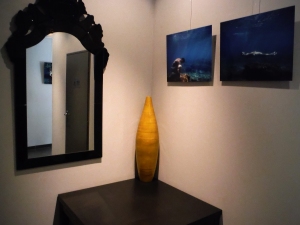












 Carolyn Krekels is jr Marketing Manager at Universal Woods EMEA, in Schelle, Belgium. She has been taking care of the EMEA marketing for the Universal Woods products for 9 years so far, first working for the EMEA distribution partner of Universal Woods. In 2012 she joined the Universal Woods EMEA team. In Carolyn’s posts, she will give you insight in the marketing actions organised by Universal Woods EMEA and can give you useful hands-on tips on how to bring your product to the market. Contact her via
Carolyn Krekels is jr Marketing Manager at Universal Woods EMEA, in Schelle, Belgium. She has been taking care of the EMEA marketing for the Universal Woods products for 9 years so far, first working for the EMEA distribution partner of Universal Woods. In 2012 she joined the Universal Woods EMEA team. In Carolyn’s posts, she will give you insight in the marketing actions organised by Universal Woods EMEA and can give you useful hands-on tips on how to bring your product to the market. Contact her via 



 an’s career in the Sign and Engraving industry started over 30 years ago. With experience in signage and personalization for many years, in 2005 Erik got involved in sublimation. In 2011 Universal Woods established its own affiliate in Belgium of which Erik became Managing Director. Together with a dedicated team he successfully worked on further expanding the Unisub brand in the EMEA region and bringing ChromaLuxe to the market.
an’s career in the Sign and Engraving industry started over 30 years ago. With experience in signage and personalization for many years, in 2005 Erik got involved in sublimation. In 2011 Universal Woods established its own affiliate in Belgium of which Erik became Managing Director. Together with a dedicated team he successfully worked on further expanding the Unisub brand in the EMEA region and bringing ChromaLuxe to the market. 

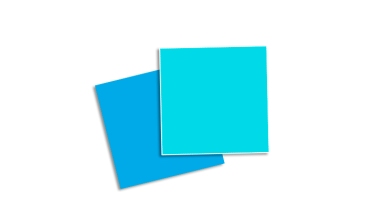
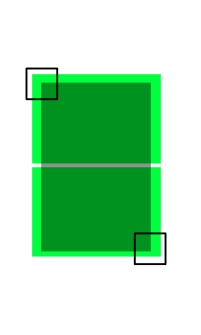 All steps in the sublimation procedure are important. When you’re not getting the results you had in mind, testing all different elements is key, so see which one influences your sublimation process. Start with these tests! They might give you some answers!
All steps in the sublimation procedure are important. When you’re not getting the results you had in mind, testing all different elements is key, so see which one influences your sublimation process. Start with these tests! They might give you some answers!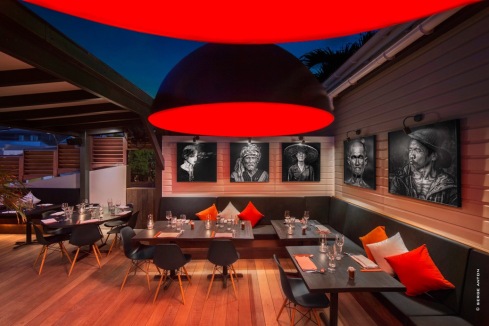 “Black Ginger” photos by Serge Anton
“Black Ginger” photos by Serge Anton

 the same with monitors – they are all different. Depending on the type of monitor, you will have different controls and settings, but once it is calibrated and profiled you will see a close rendering of the correct colours. If someone else also has a calibrated and profiled monitor they will see almost exactly the same colours. EIZO and NEC are probably the two most commonly used professional monitors. If you cannot afford a top end monitor like these, profiling will still bring you much much closer to the correct colours. Profiling is done to an international standard set by the CIE.
the same with monitors – they are all different. Depending on the type of monitor, you will have different controls and settings, but once it is calibrated and profiled you will see a close rendering of the correct colours. If someone else also has a calibrated and profiled monitor they will see almost exactly the same colours. EIZO and NEC are probably the two most commonly used professional monitors. If you cannot afford a top end monitor like these, profiling will still bring you much much closer to the correct colours. Profiling is done to an international standard set by the CIE. olour management specialists also had a range of explanations. The image was badly exposed when taken and in unusual lighting which did not help. The original shop dress is blue and black. Personally I see it as blue and black. For me the black areas are somewhat brownish but my perception of the image puts this down to the lighting and my brain reviews the information to conclude that it is black. If we open the file in Photoshop and measure the colours, be it in RGB, CMYK or Lab, the measurements will show the colours to be in the dark and blue parts of the spectrum.
olour management specialists also had a range of explanations. The image was badly exposed when taken and in unusual lighting which did not help. The original shop dress is blue and black. Personally I see it as blue and black. For me the black areas are somewhat brownish but my perception of the image puts this down to the lighting and my brain reviews the information to conclude that it is black. If we open the file in Photoshop and measure the colours, be it in RGB, CMYK or Lab, the measurements will show the colours to be in the dark and blue parts of the spectrum. me, in almost 10 years I have learned many things about tradeshows. For one: that service deadlines when organizing a show are always extended – a valuable lesson. The second thing that has changed is my approach. One rule: Make your Stand stand out.
me, in almost 10 years I have learned many things about tradeshows. For one: that service deadlines when organizing a show are always extended – a valuable lesson. The second thing that has changed is my approach. One rule: Make your Stand stand out.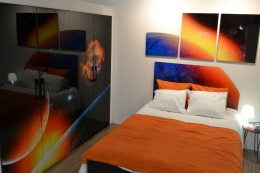 coat who gets
coat who gets  a headboard for a bed or a picnic table. Aluminium panels of 5cm wide become art. The table tops were a launched product, the floor panels a prototype, but all these applications together created a complete world of sublimation possibilities.
a headboard for a bed or a picnic table. Aluminium panels of 5cm wide become art. The table tops were a launched product, the floor panels a prototype, but all these applications together created a complete world of sublimation possibilities. spacey teen bedroom.
spacey teen bedroom.